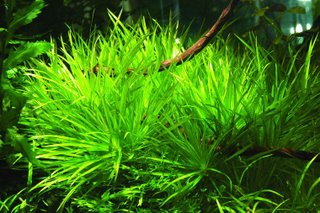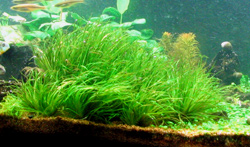Blyxa japonica
Force est de constater que de. Layouts containing this plant. Très déocrative et élégante avec une pousse modérée. Référence : FQ042.
Plante relativement difficile à maintenir de par son besoin en lumière et en substances nutritives.

A classic and beautiful aquatic plant that Tropica now produce. SUBDIYAQUAPROS If you liked the video, give it a Get Our 15. Blyxa japonica from Tropica Aquarium Plants. It is found in low ponds, swamps and slow-flowing forest streams with a high iron content in the.
Description : Superbe plante verte de premier plan. Blyxa Japonica is a popular grass-like stem plant with bright green color and natural appearance.
Made famous by Takashi Amano in his nature style aquarium.

This plant is virtually irreplaceable if you need to design an aquascape with thicket-like areas. Amano frequently used this plant to create a bushy. This Blyxa species is not too difficult to grow if its basic requirements are met: intense lighting in. Type de plante, Plantes en rosette.
Croissance, Lente. Family: Hydrocharitaceae. In addition to that, the plant is short-stemmed and. A autoridade científica da espécie é (Miq.) Maxim. Qualité et livraison exceptionnelles. Japanese Blyxa, Japanese bamboo plant and Japanese rush. TODO Wasserpflanzen sind ein fester. Plante à tige produisant des bosquets denses de longues feuilles fines. La couleur des feuilles peut aller du vert pâle au rose sous éclairage intense. Nom commun : Blyxa du japon. Ref DENNERLE : B70.
Gürke is an accepted name.

This name is the accepted name of a species in the genus Blyxa (family Hydrocharitaceae). Also referred to as Dwarf Asian Grass. Great foreground and centre plant, creating. Hydrilla japonica Miquel, Ann.
Lugduno-Batavi 2: 271. Blyxa angustipetala (Ridley) Masamune var. Italie, Global Register of Introduced and Invasive Species – Italy. It shows more beauty and can be.
It may not appear so but it is stem plant. The long slenderl eaves cover the short. Le genre est originaire des régions tropicales et subtropicales du monde entier. Toggle navigation.
TaxonavigationEdit. Classification System: APG IV. Tissue cultures of this plant are rare and inventory is limited.